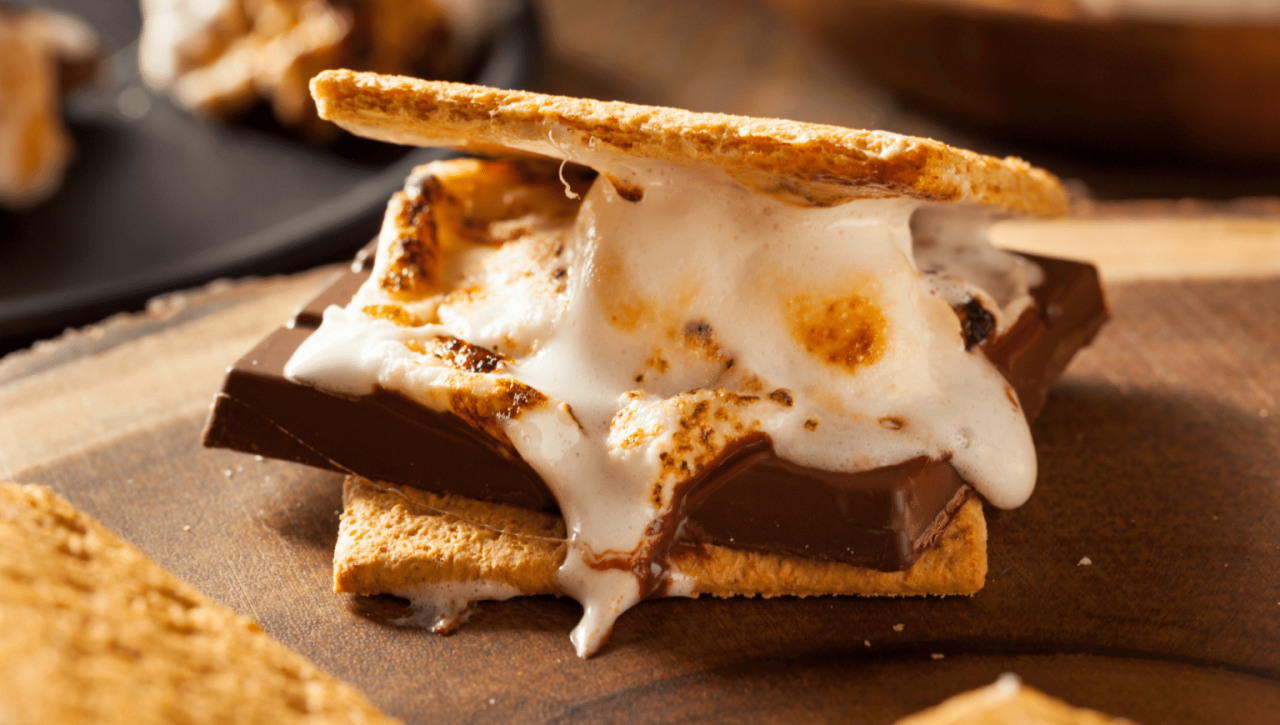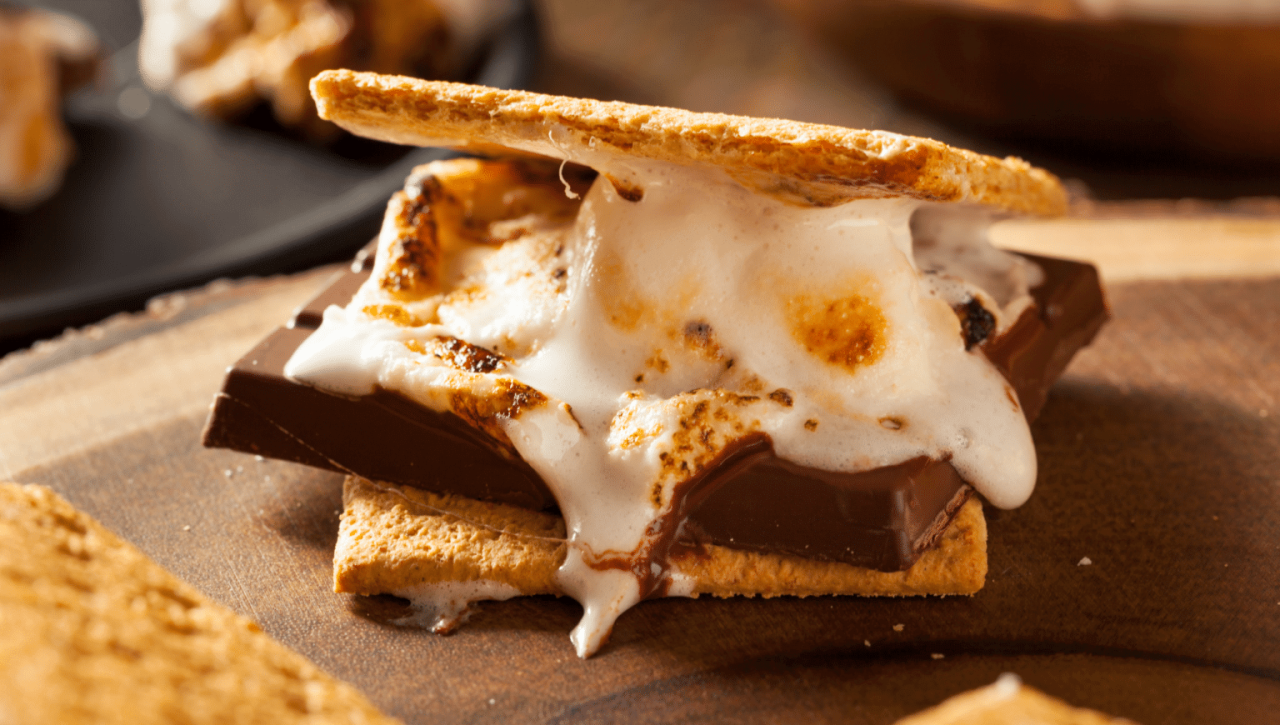Like the texture of a roasted marshmallow, this narrative unfolds in a compelling and distinctive manner, drawing readers into a story that promises to be both engaging and uniquely memorable. The texture of a roasted marshmallow is a sensory delight, contributing to an overall experience that is both tactile and taste-bud tantalizing.
The chemical composition and formation of a roasted marshmallow play a crucial role in determining its texture. The caramelization process, influenced by heat and moisture content, creates a unique combination of crispiness and chewiness that is both satisfying and indulgent.
Texture and Sensory Experience
The texture of a roasted marshmallow is a delightful combination of crispy and gooey. The exterior develops a golden-brown, slightly crispy shell while the interior remains soft and marshmallowy. This contrast in textures creates a unique and satisfying sensory experience.
Tactile Sensations
The crispy exterior provides a satisfying crunch when bitten into. It gives the marshmallow a bit of structure and prevents it from being too soft. The soft and gooey interior melts in the mouth, creating a smooth and creamy sensation.
Taste Sensations
The texture of a roasted marshmallow also contributes to its taste. The crispy exterior adds a slight caramelized flavor, while the gooey interior retains the original sweetness of the marshmallow. The combination of these flavors creates a delightful balance of sweet and savory.
Chemical Composition and Formation

A roasted marshmallow is a culinary delight that undergoes a series of chemical transformations during its preparation, resulting in its unique texture and flavor. Its chemical composition plays a crucial role in determining its texture.
The primary components of a roasted marshmallow are sugar, gelatin, and air. Sugar, the most abundant ingredient, is responsible for caramelization, the browning reaction that gives marshmallows their characteristic golden-brown exterior and chewy interior.
Caramelization and Texture
Caramelization is a complex chemical process that involves the heating of sugars. As the marshmallow is roasted, the heat causes the sugar molecules to break down and rearrange, forming new compounds that give the marshmallow its distinctive flavor and texture.
The extent of caramelization depends on the temperature and duration of roasting. A lightly roasted marshmallow will have a pale golden color and a soft, chewy texture, while a heavily roasted marshmallow will be dark brown and have a crispy exterior and a gooey interior.
Moisture Content
Moisture content also significantly influences the texture of a roasted marshmallow. Fresh marshmallows contain a substantial amount of water, which contributes to their soft and fluffy texture. As the marshmallow is roasted, the water evaporates, causing the marshmallow to shrink and become denser.
The rate of evaporation depends on the heat and airflow surrounding the marshmallow. A marshmallow roasted over an open flame will lose moisture more rapidly than one roasted in a toaster oven or on a campfire.
Culinary Applications and Variations
Roasted marshmallows have a unique texture that lends itself to various culinary applications. Their soft and gooey interior can be enjoyed on its own or incorporated into desserts, drinks, and savory dishes.
One of the most common culinary uses of roasted marshmallows is in s’mores. This classic campfire treat combines the crispy texture of graham crackers with the melted, gooey marshmallows and the rich flavor of chocolate. Other dessert applications include using roasted marshmallows as a topping for ice cream, hot chocolate, or fruit salads.
Variations in Texture, Like the texture of a roasted marshmallow
The texture of roasted marshmallows can vary depending on the roasting technique used. Marshmallows roasted over an open flame or campfire will have a crispy, charred exterior and a soft, gooey interior. Marshmallows roasted in the oven or on a grill will have a more evenly browned exterior and a slightly firmer texture.
The roasting time also affects the texture of the marshmallow. Marshmallows roasted for a shorter amount of time will have a softer, less caramelized exterior and a more liquid interior. Marshmallows roasted for a longer amount of time will have a crispier, more caramelized exterior and a denser interior.
Ultimate Conclusion
Roasted marshmallows offer a versatile culinary canvas, inspiring creative applications that highlight their distinct texture. From s’mores to campfire treats, roasted marshmallows add a touch of warmth and comfort to any occasion. Whether enjoyed on their own or incorporated into culinary creations, the texture of a roasted marshmallow remains an unforgettable sensory experience.
Common Queries: Like The Texture Of A Roasted Marshmallow
What factors contribute to the texture of a roasted marshmallow?
The caramelization process, moisture content, and roasting technique all play a role in determining the texture of a roasted marshmallow.
How can I achieve the perfect roasted marshmallow texture?
Roast the marshmallow over medium heat, rotating it frequently to ensure even browning and a crispy exterior with a soft and chewy interior.

